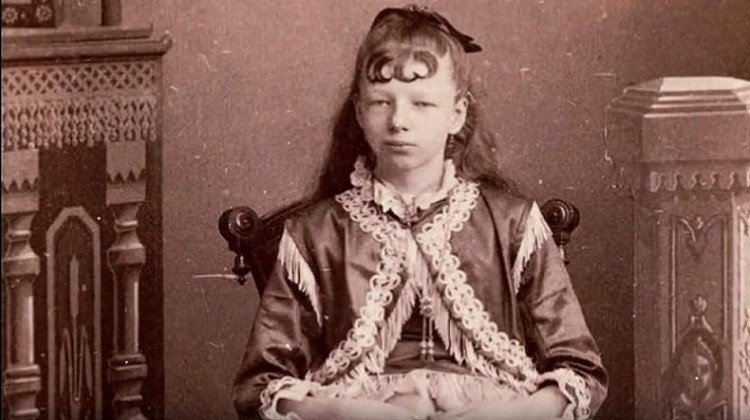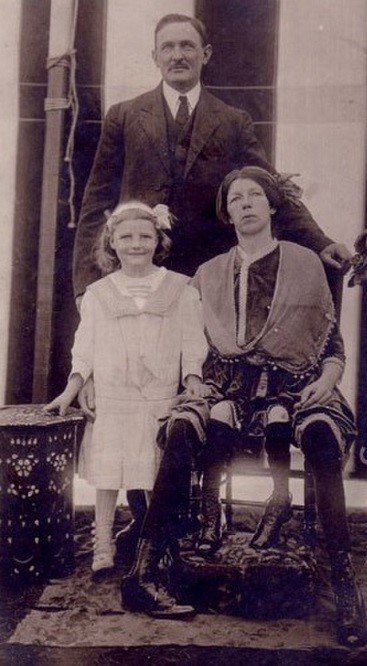Myrtle Corbin - Extraordinary Story of a Four-Legged Woman
Josephine Myrtle Corbin was born with dipygus, a rare condition that causes splitting in the axis of a developing fetus. She was born with two pelvises and four legs, of which the smaller inner two were attached to each of the bigger, outer legs.
In life, Myrtle Corbin dominated as an American sideshow performer and became a nationwide sensation for her condition. Notably, she was an inspiration for her cheery disposition and left a legacy that continued to fascinate medical professionals and laypeople alike.
Photo credit: Wikimedia
Myrtle Corbin: Story of an Extraordinary Four-Legged Woman
Family Life
Josephine Myrtle Corbin came into the world on May 12, 1868, in Lincoln County, Tennessee. She was born to Nancy Corbin, aged 34, and William H. Corbin, aged 25. Both her parents had fair skin and red hair and looked so much alike that physicians felt it necessary to add they were not ‘blood kin.’
From birth, Myrtle astounded professionals in the surrounding medical sphere. Several physicians examined her and described her as a completely normal-looking girl from the waist up. There was some concern for her health, but Corbin quickly put those fears to rest.
At three weeks old, baby Myrtle already weighed 10lbs (4.5kg). Physicians noted she was ‘nursing healthily’ and ‘thriving well.’ When growing up, strangers simply thought she had broad hips. Nothing hinted at her condition.
Career and Rise to Fame
At the age of 13, Myrtle joined a sideshow. Under the name the ‘Four-Legged Girl from Texas’, she quickly gained fame. While Corbin could move her smaller inner legs, they were too weak to walk on. She often dressed her extra limbs in socks and shoes, creating a truly surreal look.
Photo credit: Wikimedia
The young four-legged girl became so popular that many sideshows began to create four-legged gaffs (false performances). With a chair and a hidden person, rival sideshows started creating illusions of extra limbs to cash in on Myrtle’s fame.
Corbin later worked for names like P.T. Barnum, Ringling Bros, and Coney Island. For a period, she made a fortune of $450 a week.
Myrtle Corbin left the sideshow at the age of 19 to marry James Clinton Bicknell. A year later, she became pregnant for the first time, which brought to light another aspect of her unique anatomy.
Dr. Lewis Whaley was sent to help Myrtle after she started experiencing pain in her left side. This pain was accompanied by fever, headaches, vomiting, and amenorrhea and persisted for two months.
He published a case in the Atlanta Medical and Surgical Journal about Corbin, naming her ‘Mrs.B.’ It wasn’t just her legs that were duplicated, but also her internal functioning and reproductive system. Myrtle Corbin didn’t only have one functioning female reproductive system - she had two uteruses and was pregnant in the left one.
Upon hearing the news of this extraordinary discovery, Myrtle’s reaction perfectly showcased her sunny disposition and sharp personality. In response to being pregnant in the left uterus, she replied in disbelief, "If it had been in my right side, I would come nearer believing you are correct." You see - she preferred coitus on the right side and frequently commented on it.
Unfortunately, the pregnancy caused Myrtle to become severely ill, and at eight weeks, doctors terminated the pregnancy. She recovered well and went on to carry and give birth to five children with her husband.
Photo credit: Wikimedia
Myrtle Corbin in Medical Literature
Myrtle’s dipygus condition confounded teratologists (those who study congenital disabilities). Medical journals and encyclopedias used increasingly complex terms to describe and explain her extraordinary form. The correct medical term was dipygus dibrachius tetrapus or posterior dichotomy, subvariety schizorachis.
Due to the times, sadly, the classifications weren’t always kind. For example, Brooks H. Wells, in the American Journal of Obstetrics (1888), classified her as “female, belonging to the monocephalic, ileadelphic class of monsters by fusion.”
What Caused Her Condition?
There was no clear cause of Myrtle’s medical condition. There was nothing peculiar about her birth beside a breech presentation that later returned to normal. She had four older brothers and sisters, proving it was not a hereditary condition.
She was described by Lewis Whaley as completely normal from the waist up, with beauty and a sunny disposition.
The End of an Inspirational Woman
Due to a skin infection, Myrtle Corbin passed away on May 6, 1928, at the age of 59. Many private collectors and medical practitioners offered money in exchange for her corpse. The threat of grave robbing led Myrtle’s family to cover her grave in cement.
Numerous accounts mention Corbin’s admirable personality, intelligence, and taste in music. One of the first promotional pamphlets describes her as "gentle of disposition as the summer sunshine and as happy as the day is long."
And so comes to an end the inspirational story of an unusual woman. If you want to find more stories about amazing humans who have changed the world, keep an eye on Phreeque.com.



